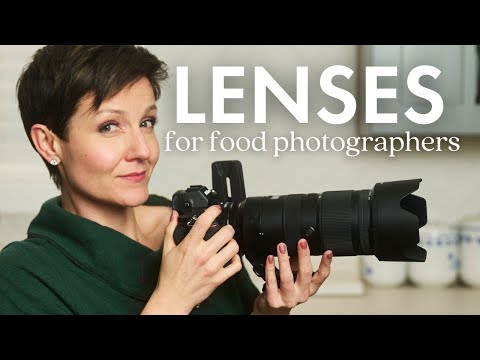
It can be difficult to know what equipment you need for the job, especially when you’re starting out or trying a new genre. Food photography is very popular and a fun thing to try if you normally shoot portraits, for example. However, do you need specialist lenses or will what you have already do the job?
In this video, food photographer Joanie Simon from The Bite Shot walks us through her favourite lenses for food shooters.
The Versatile Starting Point: 18-55mm Kit Lens
An 18-55mm kit lens ($199) is something that most photographers will already have when they start out. If you’re just beginning, there’s no reason to rush out and buy expensive new gear while you’re learning. This lens is actually a great range for food photography, and while it usually isn’t quite as sharp as more expensive lenses, it’s good to learn lighting and try out different things without getting into debt.
Once you know what you want to do and have spent some time (we’re talking years here) developing your knowledge and style, you can invest in the correct gear for your needs.
The Nifty Fifty (50mm f/1.8)
Sticking with the budget options, if you want to upgrade to a prime lens, the 50mm f/1.8 ($125) is an excellent choice. It’s a great focal length for food photography, particularly on a full-frame camera. The minimum focusing distance is not super close. However, for food photography, that isn’t always necessary, especially for table-scapes.
The wide aperture will help you get a beautiful shallow depth of field and blur out the background nicely, should you wish to. Also in terms of value, this is an excellent lens and offers considerably more quality versus the price than the kit lens.
Reveal the detail with a macro lens: 100mm or 105mm macro lens
The next lens that you might wish to invest in would be a macro lens. A 90mm macro 1:1 lens would also be an excellent choice besides the 100 or 105mm ($669). Macro lenses allow you to shoot at much closer distances so that everything seems larger than life. They can be excellent for abstract detail images of food and ingredients.
One drawback, though, is that you will need a good tripod and great light to really get the most out of these lenses. The magnification also creates a very narrow depth of field, so learning about focus stacking will be necessary.
The Workhorse: 24-70mm f/2.8 Lens
Finally, Joanie says that her ‘workhorse’ lens is probably the 24-70mm f/2.8 lens ($2099). It has a nice wide aperture and a good range of focal lengths, allowing for versatility and flexibility. Its zoom range, from wide-angle to mid-telephoto, makes it a go-to option for capturing everything from entire table spreads to detailed shots of individual dishes.
Now, this lens is not cheap, running into the thousands price-wise. However, this lens will probably be on your camera for 80% of the time and will last you throughout your photographic life. These lenses are super sharp and of the highest quality. Ultimately with glass, you get what you pay for, although you could argue that upgrading your lighting will make a bigger difference.
It’s important to remember that this is just one person’s perspective,. Lens choices, just with anything are largely based on what you can afford and where you’re at in your photography journey. Use what you have until it’s really holding you back. You can always rent gear to try it out before you buy it as well.
Remember: new gear does not equal better photos. It is fun though 😉







